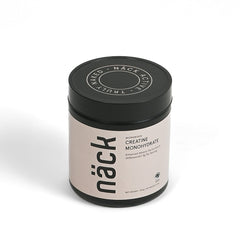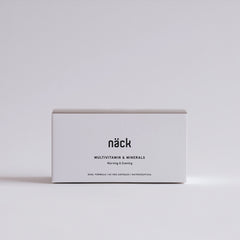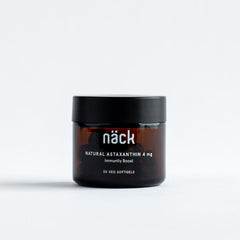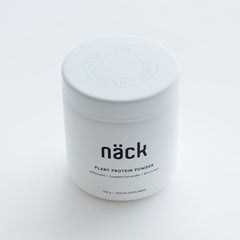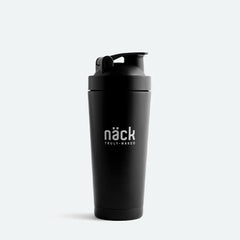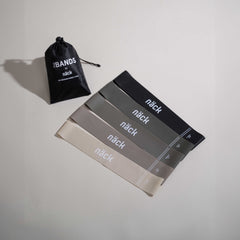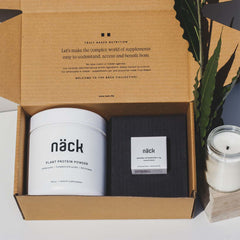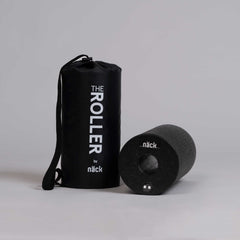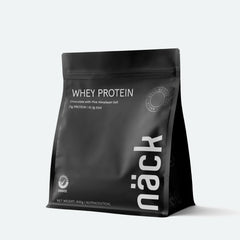Astaxanthin
Astaxanthin
Astaxanthin is a powerful antioxidant. Antioxidants are substances that can prevent or slow damage to cells caused by free radicals, unstable molecules that the body produces as a reaction to environmental and other pressures. As free radicals lack a full complement of electrons, they steal electrons from other molecules and damage those molecules in the process. Antioxidants neutralize free radicals by giving up some of their own electrons. In making this sacrifice, they act as a natural "off" switch for the free radicals.
If the body cannot process and remove free radicals efficiently, oxidative stress can result. This harms cells and body functions. Hence your body needs to maintain a certain balance of free radicals and antioxidants.
Astaxanthin is part of the carotenoid family and has a red pigment. Carotenoids are naturally occurring in chloroplasts and chromoplasts of plants, bacteria, algae, fungi and in the birds and fish that eat them (salmon, shrimp, flamingos). The richest source of natural astaxanthin in nature is Haematococcus pluvialis, a microalgae that can be found in artic marine environment and common freshwater rock pools across the world.
Antioxidant Strengths
Natural Astaxanthin has been tested head-to-head in many experiments on antioxidant strength against several other carotenoids and antioxidants; it has consistently come out as the very strongest of them all. In a study done in the 1990’s in Japan the researchers focused on Astaxanthins ability to quench singlet oxygens. It compared Astaxanthin against several other antioxidants including carotenoids such as lutein and beta carotene, and it also tested Astaxanthin against Vitamin E.
In singlet oxygen elimination, results of this study found Astaxanthin to be:
-
550 times stronger than Vitamin E
-
11 times stronger than beta-carotene
-
2.75 times stronger than lutein (Shimidzu, et al, 1996)
In another study also conducted in Japan, but much later in 2007, Astaxanthin’s strengths against singlet oxygen was again investigated but against a completely different set of antioxidants. The antioxidants evaluated in this study were Coenzyme Q10, green tea catechins, alpha lipoic acid and Vitamin C.
In singlet oxygen elimination, results of this study found Astaxanthin to be:
-
8000 times more potent than Vitamin C
-
800 times more potent than CoQ10
-
550 times more potent than Green Tea Catechins
-
75 times more potent than Alpha Lipoic Acid (Nishida, et al, 2007)
Singlet oxygen are without a doubt very harmful to our cells over time, but there is many different types of oxidants that wreak havoc in our bodies. In a study led by Dr Bagchi, publicised in 2013, Astaxanthins ability to scavenge free radicals was tested.
The results showed that, in free radical quenching, Natural Astaxanthin is:
-
14X stronger than Vitamin E
-
21X stronger than Synthetic Astaxanthin
-
54X stronger than beta-carotene
-
65X stronger than Vitamin C (Capelli, et al, 2013)
1. Carotenoids as Singlet Oxygen Quenchers in Marine Organisms. Fisheries Science, 62, 134-137.
Shimidzu, N., Goto, M., & Miki, W. (1996).
2. Quenching activities of common hydrophilic and lipophilic antioxidants against singlet oxygen using chemiluminescence detection system Carotenoid Science 11 16–20
Nishida Y, Yamashita E, Miki W (2007)
3. “Synthetic Astaxanthin is significantly inferior to algal-based Astaxanthin as an antioxidant and may not be suitable as a human nutritional supplement.” NutraFoods 12:145-52
Capelli, B., Bagchi, D., Cysewski, G. (2013)
4. Structures of Astaxanthin and Their Consequences for Therapeutic Application. Int J Food Sci. Published 2020 Jul 20. doi:10.1155/2020/215658
Brotosudarmo THP, Limantara L, Setiyono E, Heriyanto (2020)
Immunity & Anti-Inflammatory
The immune system is made up of a network of cells, tissues and organs that work together to protect the body. Its purpose is to provide protection against infectious microorganisms, such as certain bacteria and viruses; whilst also working to destroy any infectious microorganisms that do invade the body. Clinical research has shown that Natural astaxanthin has a strong ability to both balance and strengthen the immune system, therefore improving its ability to defend the body whilst also helping to suppress the overactive immune responses that create unwanted inflammation.
Numerous clinical studies have been conducted which concludes that Astaxanthin improves several blood immune markers and enhances our immune response. In a landmark human clinical trial by Park, et al, (2010) the researchers tested the effect of Astaxanthin on the immune system of healthy females. Three different groups where assigned in this randomized, double-blind, placebo-controlled study. One group took placebo for eight weeks, while the other groups took either 2mg or 8mg per day of Natural Astaxanthin. After 8 weeks of supplementation had passed the research concluded that even at a dose as low as 2 mg per day, Natural astaxanthin improves several blood immune markers in humans, namely;
-
Astaxanthin increases the total number of antibody producing B-cells
-
Astaxanthin increases the number of T-cells
-
Astaxanthin amplifies natural killer cell cytotoxic activity
-
Astaxanthin significantly increases delay-type hypersensitivity response
-
Astaxanthin stimulates lymphocyte proliferation
-
Astaxanthin decreases DNA damage significantly
Another important human trial was conducted in Europe in 2015 by Baralic, et al,. This study randomly assigned 40 elite soccer players to either a placebo group or a group that took 4 mg Natural Astaxanthin per day. The study lasted for 90 days and the subject supplementing with astaxanthin resulted in an increase in immunoglobin as measured in their saliva.
In addition, Astaxanthin is a proven anti-inflammatory. The marker used to measure how much silent (systematic) inflammation is occurring in a person’s body is called C-reactive protein (CRP). Even though silent inflammation does not cause any pain it has been singled out as a leading cause to many serious diseases. In the randomized, double blind placebo controlled study by Park et al. (2010) mentioned above, the subjects were also tested for the pro-inflammatory marker CRP. The astaxanthin group supplemented with 2mg/d for 8 weeks showed that the levels of CRP were significantly reduced. The anti-inflammatory effect was also proven by Baralic, et al,. (2015), where the placebo group showed an increase in high sensitivity C-reactive protein levels but the astaxanthin group showed no such increase.
1. Astaxanthin decreased oxidative stress and inflammation and enhanced immune response in humans. Nutr Metab (Lond). Mar 5;7:18. doi: 10.1186/1743-7075-7-18. PMID: 20205737; PMCID: PMC2845588.
Park JS, Chyun JH, Kim YK, Line LL, Chew BP. ( 2010).
2. “Effect of Astaxanthin supplementation on Salivary IgA, oxidative stress, inflammation in young soccer players.” Evidence Based Complimentary and Alternative Medicine 2015;2015:783761.
Baralic, I., Andjelkovic, M., Djordjevic, B., Dikic,, N., Radivojevic, N., Suzin-Zivkovic,, V.,Radojevic-Skodric, S., Pejic, S. (2015).
Skin Health
Skin is the largest organ of the body and its health is central for our survival. It is the first line of defence and plays an important part in helping the body carry out vital processes. Our skin is constantly exposed to oxidative stress from internal and external stressors such as bad diet, metabolic by-products and various environmental factors like pollution and UV rays. Oxidative stress causes damage to the skin, in the form of fine lines, wrinkles, roughness and loss of elasticity. A large body of research has shown that astaxanthin can enhance overall skin health by improving skin moisture, elasticity and reducing wrinkles.
A randomized, double-blind placebo-controlled study by Tominaga et al. (2012) involving 36 healthy male subjects showed that crow´s feet wrinkles, elasticity and transepidermal water loss (TEWL) were improved after 6 weeks of daily supplementation with 6mg of natural astaxanthin. Moisture content and sebum oil level on the cheek zone also showed strong tendencies for improvement.
Further, in a landmark clinical trial done in the USA in 2006, forty-six middle healthy women were divided into two groups—one group taking 4mg of Natural Astaxanthin per day and the other group taking placebo. Results were examined in a variety of ways such as measurement by dermatological devices; visual assessment by a dermatologist; before and after pictures; and self-assessment. All results showed noticeable and statistically significant benefits. This clinical trial found that, Natural Astaxanthin: Fights wrinkles, improves skin elasticity, increases skin moisture levels, reduces visible signs of UV-aging within four to six weeks of use and maintains a youthful appearance (Yamashita, 2006)
In addition, Astaxanthin was also found to be effective in protecting skin cells from UV-induced oxidative stress. In fact, an early study demonstrated in-vitro that Astaxanthin is 100 times stronger than beta-carotene and, remarkably, 1000 times stronger than lutein in protecting cells against UVA light-induced oxidative stress (O’Connor & O’Brien, 1998).
1. “Cosmetic benefits of Astaxanthin on human subjects.” Acta Biochim Pol, 59(1), 43-47.
Tominaga, K., Hongo, N., Karato, M., & Yamashita, E. (2012).
2. “The Effects of a Dietary Supplement Containing Astaxanthin on Skin Condition.” Caratenoid Science, 2006.
Yamashita, E. (2006).
3. “Modulation of UVA light-induced oxidative stress by beta carotene, lutein and astaxanthin in cultured fibroblasts.” Journal of Dermatological Science. 16(3):226-230.
O’Connor I., O’Brien, N. (1998).
Strengths & Endurance
Intense physical activity increases the production of free radicals and reactive oxygen species (ROS) in the body. These highly reactive molecules cause an imbalance in the body’s natural antioxidant system, known as oxidative stress. Oxidative stress can damage proteins, lipids and DNA in muscle cells and can also cause inflammation. This can result in muscle fatigue & soreness and usually lead to the activation of inflammatory pathways that may negatively impact muscle performance.
Several clinical studies have shown that Natural Astaxanthin can reduce joint and muscle soreness as well as inflammation after exercise with doses ranging from 4mg-12mg/day (Nagata., et al, 2013, Sawaki, K., et al 2002, Powers., et al, 2008). Researches attribute these findings to Astaxanthins anti-inflammatory benefits and its ability to protect cell membrane against free radicals which are generated during exercise, thus preserving the functionality of muscle cells.
In addition, Astaxanthin has been clinically proven to increase strengths and endurance in healthy subjects. One very interesting and extensive study worth noting in this regard is a 6 months long clinical study conducted in Sweden by lead researcher Dr. Kurt Malmsten. The subjects, healthy young males, took 4 mg of Astaxanthin per day in conjunction with an exercise program which included doing deep knee bends to exhaustion after a warmup period. After 6 months the results showed an increased strengths and endurance by 62%. The placebo group also showed improvement of 22% which is normal for young people participating in sports and exercise actives over a 6-month period. However, what is interesting and what really counts is the relation between the two groups tested. Strengths and endurance increased three times faster in the men taking Astaxanthin compared to the placebo group.
1. “Effects of Astaxanthin on recovery from whole fatigue with three stepwise exercises.” Hiro to Kyuyo no Kagaku 2003 Vol. 18;No.1;Pages 35-46.
Nagata, A., Tajima, T., Hamamatsu, H. (2003).
2. “Dietary Supplementation with Astaxanthin-Rich Algal Meal Improves Strengh Endurance- A Double Blind Palcebo Controlled Study on Male Students.” Carotenoid Science, 2008.
Malmsten, C., Lignell, A. (2008).
3. “Sports performance benefits from taking natural Astaxanthin characterized by visual acuity and muscle fatigue improvement in humans.” Journal of Clinical Therapeutics & Medicines 2002 Vol.18;No.9;Pages1085-1100.
Sawaki, K., Yoshigi, H., Aoki, K., Koikawa, N., Azumane, A., Kaneko, K., Yamaguchi, M. (2002).
4. “Exercise-induced oxidative stress: Cellular mechanisms and impact on muscle force production.” Physiological Reviews 2008 Oct;88(4):1243-76.
Powers, S., and Jackson, M. (2008).
Eye Health
There are several human clinical trials conducted with Natural Astaxanthin that validate a variety of eye health benefits linked to eye fatigue, eye accommodation and eye strain. Eye fatigue (medically known as “Asthenopia”) is becoming more prevalent due to extensive use of computers and other visual display devices. This can manifest as eye strain, blurring and double vision. Accommodation is a vital function of the eyes. This is the process by which the eye changes optical power to focus on a particular object as the viewing distance varies.
In a double blind, placebo-controlled human clinical study by Nagaki in 2002, the researchers reported a 46% reduction in the number of eye strains after 4 weeks of supplementation with 5 mg of Natural Astaxanthin per day. They also found higher visual accommodation (the adjustment in the lens of the eye that allows it to focus) ability in subjects who used visual display devices. Another group of researchers found similar results in their clinical trial. This double blind study was done to evaluate Astaxanthin’s effect on eye fatigue and visual accommodation. Forty subjects were divided into placebo and treatment groups, with the treatment group receiving 6 mg of Astaxanthin for four weeks. The results showed that three separate visual parameters were found to have statistically significant benefits from Astaxanthin supplementation (Nitta, 2005). A study the following year supported these results. This study concluded that taking 6mg of Natural Astaxanthin per day has the effects of reducing and preventing eye strain and accommodative dysfunction (Iwasaki,. et al, 2006). This study was interesting as it showed both a preventative as well as a curative potential for Astaxanthin for eye conditions such as strain and accommodation.
In addition, studies have shown that 6 mg per day of Natural Astaxanthin supplementation forfour weeks can reduce eye soreness, dryness, tiredness and blurred vision (Shiratori., et al, 2005, Nagaki,. et al, 2006, Capelli & Cysewski, 2014).
1. “Effects of Astaxanthin on accommodation, critical flicker fusion, and pattern visual evoked potential in visual display terminal workers.” Journal of Traditional Medicines. 19(5):170–173.
Nagaki, Y., Hayasaka, S., Yamada, T., Hayasaka, Y., Sanada, M., Uonomi, T. (2002).
2. “The effects of Astaxanthin on Accommodation and Asthenopia—Dose Finding Study in Healthy Volunteers.” Clinical Medicine. 21(5):543-556
Nitta, T., Ohgami, K., Shiratori, K. (2005).
3. “Effects of Astaxanthin on Eye Strain and Accommodative Dysfunction.” Journal of the Eye Vol. 23 No. 6 Page 829-834 (2006).
Iwasaki, T. and Tahara, A. (2006).
4. “The supplementation effect of astaxanthin on accommodation and asthenopia,” Journal of Clinical Therapeutics & Medicines, 22(1), 41-54, 2006
Nagaki, Y., Mihara, M., Tsukuhara, H. and Ohno, S, ( 2006).
5. “The effects of Astaxanthin on Accommodation and Asthenopia—Efficacy Identification Study in Healthy Volunteers.” Clinical Medicine. 21(6):637-650.
Shiratori, K., Ogami, K., Nitta, T. (2005). 6. “The World’s Best Kept Health Secret: Natural Astaxanthin.” ISBN #0-979-2353-0-6.
Capelli and Cysewski, (2014).

